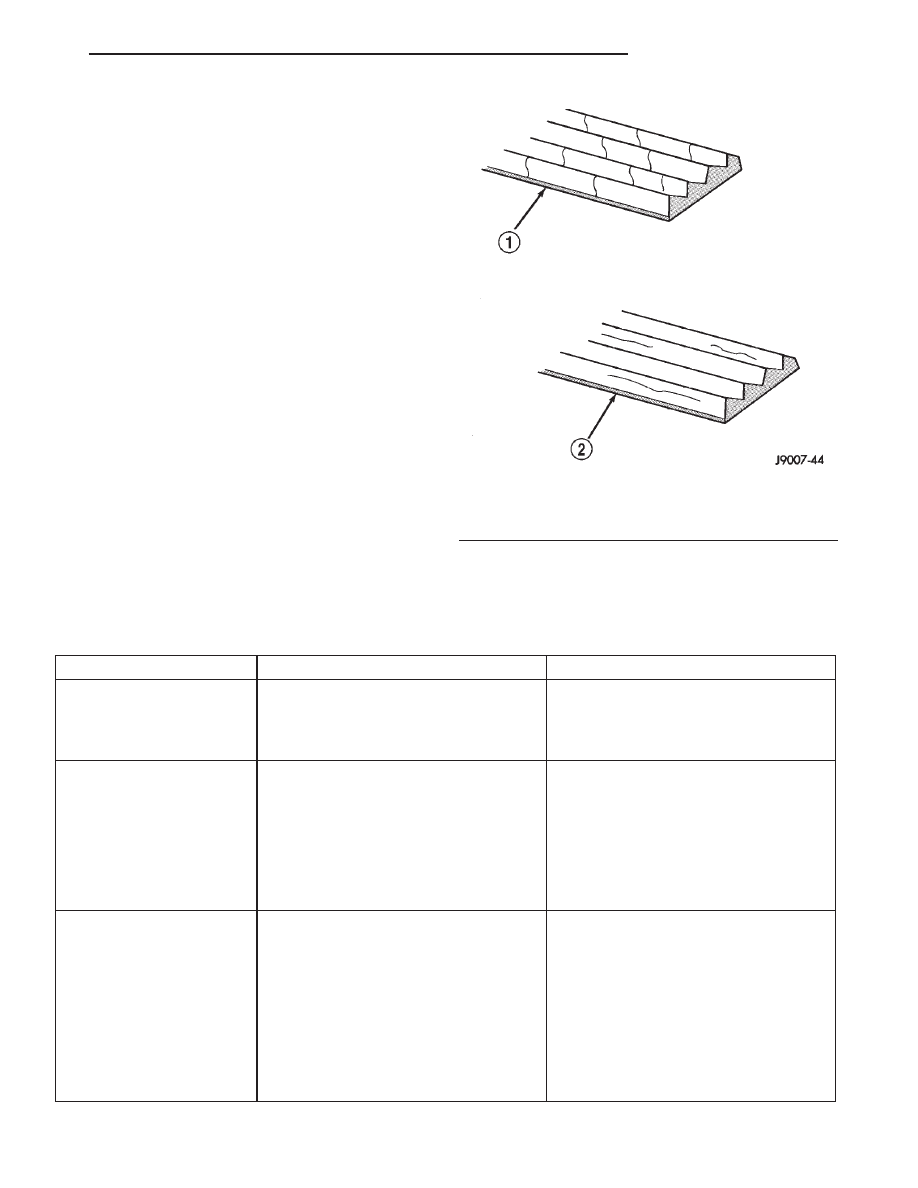Dodge Durango (DN). Manual - part 255

ACCESSORY DRIVE BELT DIAGNOSIS
VISUAL DIAGNOSIS
When diagnosing serpentine accessory drive belts,
small cracks that run across the ribbed surface of the
belt from rib to rib (Fig. 23), are considered normal.
These are not a reason to replace the belt. However,
cracks running along a rib (not across) are not nor-
mal. Any belt with cracks running along a rib must
be replaced (Fig. 23). Also replace the belt if it has
excessive wear, frayed cords or severe glazing.
Refer to the Accessory Drive Belt Diagnosis charts
for further belt diagnosis.
NOISE DIAGNOSIS
Noises generated by the accessory drive belt are
most noticeable at idle. Before replacing a belt to
resolve a noise condition, inspect all of the accessory
drive pulleys for alignment, glazing, or excessive end
play.
ACCESSORY DRIVE BELT DIAGNOSIS CHART
CONDITION
POSSIBLE CAUSES
CORRECTION
RIB CHUNKING (One or
more ribs has separated
from belt body)
1. Foreign objects imbedded in pulley
grooves.
1. Remove foreign objects from pulley
grooves. Replace belt.
2. Installation damage
2. Replace belt
RIB OR BELT WEAR
1. Pulley misaligned
1. Align pulley(s)
2. Abrasive environment
2. Clean pulley(s). Replace belt if
necessary
3. Rusted pulley(s)
3. Clean rust from pulley(s)
4. Sharp or jagged pulley groove tips
4. Replace pulley. Inspect belt.
5. Belt rubber deteriorated
5. Replace belt
BELT SLIPS
1. Belt slipping because of insufficient
tension
1. Inspect/Replace tensioner if
necessary
2. Belt or pulley exposed to substance
that has reduced friction (belt dressing,
oil, ethylene glycol)
2. Replace belt and clean pulleys
3. Driven component bearing failure
(seizure)
3. Replace faulty component or bearing
4. Belt glazed or hardened from heat
and excessive slippage
4. Replace belt.
Fig. 23 Belt Wear Patterns
1 – NORMAL CRACKS BELT OK
2 – NOT NORMAL CRACKS REPLACE BELT
DN
COOLING SYSTEM
7 - 19
DIAGNOSIS AND TESTING (Continued)